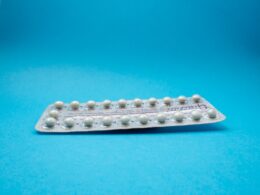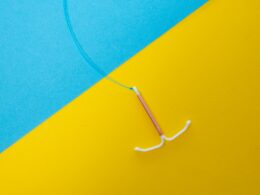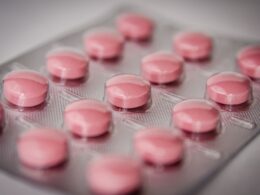Most women have a lot on their plate after giving birth, but they also need to think about what type of birth control to use. Many new moms worry that hormone-based methods will decrease their milk supply, but this shouldn’t be a concern.
The mini-pill, which contains only progestin and not estrogen, is the safest form of oral contraceptive for breastfeeding mothers. Other hormonal options include IUDs and implants.
Sage Tea
While breastfeeding, it’s important to stay hydrated. Drinking enough fluids can help dry up milk and ease engorgement. Many herbal teas can also help dry up breast milk. Sage tea is one option. Some mothers report a drop in their milk supply after drinking sage tea, but the drop usually doesn’t last long.
If your breasts become engorged, try using cold packs to reduce the swelling. Avoid tight bras and nipple massage, which can worsen the engorgement. Instead, apply a cool compress or a chilled cabbage leaf to your nipples. Other natural remedies that can ease engorgement include drinking chamomile tea and dandelion tea. However, dandelion and chamomile aren’t safe in large amounts during pregnancy or breastfeeding.
Sage tea is available in stores and can be made at home by steeping 1 teaspoon of rubbed sage in a cup of boiling water. You can also use a sage tincture, which is more concentrated than the tea. Many mothers find sage tea helps decrease their milk production, especially during the weaning process or after a traumatic birth event like a miscarriage or fetal demise.
Sage has been shown to help reduce hot flashes, night sweats and excessive perspiration in postmenopausal women. It’s important to talk with your doctor about whether or not a natural herb like sage is right for you.
Estrogen-Based Birth Control
Hormonal birth control works by mimicking hormones that naturally occur in the body. The hormones prevent ovulation and thicken cervical mucus, which makes it more difficult for sperm to attach and fertilize an egg. Most birth control pills contain estrogen and progestin. Combination pills (also known as the pill) and a progestin-only option, which is sometimes called the minipill, are both considered compatible with breastfeeding. However, it’s best to avoid a hormonal option that contains more than 30 micrograms of daily ethinyl estradiol as these can decrease milk supply, which may lead to earlier breastfeeding cessation.
Although small amounts of the hormones in hormonal birth control can pass through the breast milk, there is no evidence that they harm infants. In fact, the La Leche League notes that some research suggests breastfed babies who are exposed to hormones through the mother’s birth control have fewer health problems and are less likely to be small for their gestational age (SGA).
Many women choose to use hormonal methods of birth control while breastfeeding, such as the pill, Skyla and Mirena IUDs, the implant and NuvaRing, or the monthly, yearly, or biannual hormonal shot. Most of these don’t impact a woman’s milk supply and are safe to start right after giving birth.
Decongestants
Some decongestant tablets, liquids or powders may be safe to use when breastfeeding, but check with your GP or pharmacist before taking them. Decongestant nasal sprays may also be suitable, but they should not be used for more than a week at a time because they can make stuffiness worse. Always read the patient information leaflet carefully and follow the instructions.
Hormonal birth control contains forms of the hormones estrogen and progestin, and it can sometimes affect a woman’s milk supply. It’s more likely to do so if she’s nursing an older baby or has already been having problems with low milk supply, but it can happen to any breastfeeding mother.
Some forms of hormonal birth control don’t contain estrogen, and they may not affect a woman’s milk supply. Examples include the contraceptive sponge (which blocks sperm with a barrier) and the spermicidal vaginal ring (which releases the hormones progestin and estrogen into the cervix). Injections, such as the Depo-Provera shot, are another option, but they don’t have the same level of hormones as implants or pills. A woman can still get pregnant from a contraceptive injection if she has sex with a man who’s also using the pill or implant, so it’s important to use a backup method of contraception once sexual activity resumes.
Other Options
There are a number of birth control methods that don’t contain estrogen and don’t interfere with breastfeeding. These include hormonal pills, a vaginal ring and birth control patches that release hormones through the skin. Some women may also want to consider the lactational amenorrhea method (LAM), which works by suppressing a woman’s fertility while she exclusively breastfeeds.
Barrier methods such as male and female condoms, diaphragms and cervical caps are safe to use while breastfeeding. But they will only be effective if the mother waits until her cervix and uterus return to their pre-pregnant size before using them. It’s important to talk to a healthcare provider about this option.
Hormonal birth control such as IUDs, arm implants and Depo-Provera injections are also safe to use while breastfeeding, but they have lower pregnancy rates than a combination birth control pill. The best options for this type of birth control are progesterone only pills (POPs), which do not contain any sugar or placebo pills, and the copper IUD, which can last up to 12 years.
If you have questions about birth control and breastfeeding, schedule an in-person or video appointment with your OB-GYN provider or certified nurse midwife. They can give you personalized advice and help you find the right choice for you. Hers specializes in supporting women through the challenges of motherhood, including finding the most appropriate birth control options while breastfeeding.









